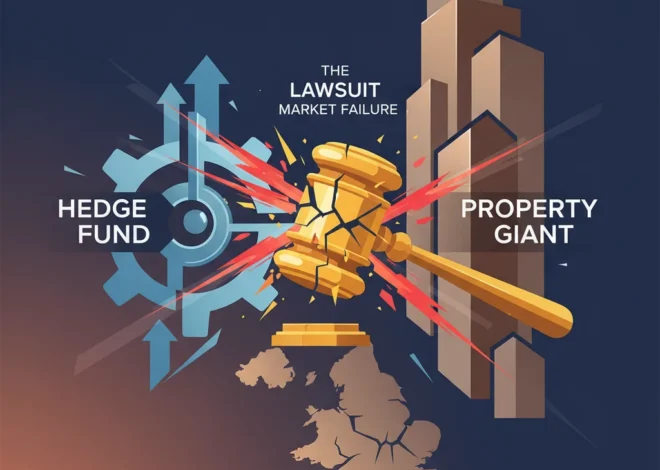
Solving the Market: Why Navigating the Economy is Like Cracking the Ultimate Crossword Puzzle
For many, the day begins with a familiar ritual: a fresh cup of coffee and a dive into the day’s crossword puzzle. It’s a mental warm-up, a structured battle of wits against a grid of empty squares and cryptic clues. Each solved word brings a small victory, a piece of order carved from chaos. The Financial Times Crossword, in particular, is a celebrated challenge, demanding not just vocabulary but a knack for lateral thinking and pattern recognition. But what if this daily exercise holds a deeper parallel to a far more complex and high-stakes puzzle: the global financial market?
At first glance, the comparison might seem trivial. One is a pastime, the other the engine of global commerce. Yet, the skills required to master both are strikingly similar. Success in both arenas hinges on decoding a specialized language, understanding how disparate elements intersect, and maintaining a disciplined strategy in the face of ambiguity and misdirection. The modern investor, much like a seasoned cruciverbalist, must look beyond the surface, connect seemingly unrelated events, and fill in the blanks to reveal a coherent picture. By examining the structure of a crossword, we can uncover a powerful framework for understanding the intricate dynamics of finance, investing, and the broader economy.
The Fundamentals: Defining Your Financial Lexicon
Every crossword begins with the basics: the “gimme” clues that provide an entry point into the grid. These are the foundational words upon which the entire puzzle is built. In the world of finance, this is your core vocabulary—the essential terms that form the bedrock of any sound investment strategy. Without a firm grasp of these concepts, the market remains an indecipherable mess of jargon and noise.
Consider a few terms that might appear in a finance-themed puzzle, such as FT Crossword Number 18,209. Words like “Capital,” “Asset,” “Overdraft,” and “Earner” are not just abstract concepts; they are the building blocks of financial literacy.
- Capital: This is more than just money. It’s the lifeblood of business, the fuel for growth, and the foundation of wealth creation. Understanding the difference between human, financial, and intellectual capital is crucial for evaluating a company’s long-term prospects.
- Asset: An asset is anything of value that can be converted into cash. For an investor, the goal is to acquire assets—stocks, bonds, real estate—that will appreciate over time. Distinguishing a productive asset from a speculative one is a fundamental skill in trading and long-term investing.
- Overdraft: A simple banking term that represents a form of short-term credit. On a larger scale, it’s a microcosm of the global debt system, where access to credit and the cost of borrowing can dictate the health of the entire stock market. According to some analyses, global debt levels have reached unprecedented heights, making an understanding of leverage more critical than ever (source).
Just as you cannot solve a crossword without knowing the definitions of words, you cannot successfully navigate the financial markets without a deep understanding of these core principles. They are your “Across” clues—the horizontal framework that gives the puzzle its structure.
The £303 Billion Powerhouse: Why Britain's Self-Employed Are the Economy's Unsung Heroes
The Interconnected Grid: How Macroeconomics Shapes Your Portfolio
The true genius of a crossword lies in its interconnectedness. An “Across” word shares letters with multiple “Down” words, creating a web of dependencies. A single wrong letter can cause a cascade of errors, rendering a whole section unsolvable. The global economy operates on the exact same principle. No market, industry, or asset class exists in a vacuum.
A decision made by a central bank (a “Down” clue) will inevitably intersect with corporate earnings, consumer spending, and international trade (the “Across” clues). Take, for instance, the relationship between a nation’s “Treasury” and the rate of “Inflation”—two concepts frequently explored in economic discourse. When a Treasury department, through its government, enacts fiscal stimulus, it can inject capital into the economy, potentially spurring growth. However, this action directly intersects with the mandate of central banks to control inflation. This tension is a constant in economics, creating a complex puzzle for investors. A recent report highlighted that central banks worldwide are walking this tightrope, with policy missteps having significant market ramifications (source).
This interconnectedness is why a purely bottom-up approach to investing (analyzing single companies) is often insufficient. A successful investor must also think like a top-down strategist, asking questions like:
- How will a shift in monetary policy affect the banking sector?
- How might a geopolitical event in one region impact supply chains and commodity prices globally?
- How does a corporate “Takeover” in the tech industry signal broader trends in market consolidation?
To illustrate the parallels more clearly, consider the complementary skills needed for both disciplines:
| Core Skill | Application in Crossword Solving | Application in Financial Analysis |
|---|---|---|
| Pattern Recognition | Identifying a setter’s favorite tricks or common letter combinations. | Recognizing historical market cycles, chart patterns, or recurring economic trends. |
| Lateral Thinking | Interpreting cryptic clues that use puns, anagrams, and double meanings. | Finding value in out-of-favor sectors or seeing opportunities others miss (contrarian investing). |
| Vocabulary & Knowledge | Having a broad lexicon and general knowledge base. | Understanding financial terminology, industry specifics, and macroeconomic principles. |
| Patience & Persistence | Working through a difficult clue or section without giving up. | Adhering to a long-term investment strategy despite short-term market volatility. |
Reading Between the Lines: The Psychology of a Volatile Market
The most challenging crossword clues are the cryptic ones. They are designed to mislead, playing on assumptions and cognitive biases. The surface reading is almost always wrong. The phrase “flower of London” might not refer to a plant, but to the River Thames—a “flow-er.” This requires a deeper level of thinking, an ability to look past the obvious and consider alternative interpretations.
This is the essence of navigating market sentiment and behavioral finance. The market is often driven by narratives, emotions, and psychological biases that can be just as misleading as a cryptic clue. Words from the puzzle like “Tension,” “Error,” or even “Idealist” perfectly capture these human elements.
- Tension: Financial markets exist in a constant state of tension between fear and greed, bulls and bears, risk-on and risk-off sentiment. Recognizing this tension without being swept away by it is key to avoiding emotional decisions.
- Error: The market is an error-correction machine. Mispriced assets and flawed theses are eventually exposed. A great investor, like a great puzzle-solver, is not someone who never makes an error, but someone who recognizes and corrects them quickly. The cost of clinging to a flawed investment thesis can be immense, a fact supported by numerous market studies (source).
- Idealist: An idealistic investor who believes a stock will go up “just because” is bound for disappointment. The market is pragmatic and, over the long run, rational. A successful approach requires a healthy dose of skepticism and a commitment to data-driven analysis over hopeful narratives.
Infrastructure's Blind Spot: Why We're Asking the Wrong Questions About a .6 Trillion Problem
The Evolving Puzzle: Blockchain, Fintech, and the Future of Finance
Crossword puzzles evolve. New words enter the lexicon, and cultural references change. The puzzle you solve today is different from one solved 50 years ago. Similarly, the financial grid is constantly being updated with new technologies, asset classes, and paradigms.
The rise of fintech and blockchain represents one of the most significant evolutions in the history of the financial puzzle. These innovations are not just new clues; they are fundamentally changing the structure of the grid itself.
- Blockchain technology introduced entirely new asset classes like cryptocurrencies and NFTs, creating new squares on the grid that didn’t exist a decade ago. It also offers a new infrastructure for traditional finance, promising to solve age-old problems of transparency and settlement times.
- Financial technology platforms have democratized access to the puzzle. Retail investors now have tools for research, trading, and portfolio management that were once the exclusive domain of institutional giants. This has added millions of new “solvers” to the game, each influencing the outcome.
For the modern business leader or investor, ignoring these developments is like trying to solve a modern crossword with a Victorian-era dictionary. It’s essential to learn this new language, understand the mechanics of these new systems, and appreciate how they intersect with the traditional financial world. The puzzle is becoming more complex, but for those willing to learn the new rules, it also presents a wealth of new opportunities.
Ultimately, whether you’re staring at a grid of black and white squares or a screen of flashing stock tickers, the objective is the same: to impose logic on a complex system and find the solution hidden within. The financial markets are the world’s largest, most dynamic, and most consequential crossword puzzle. By approaching it with the intellectual curiosity, strategic discipline, and persistent mindset of a master solver, you can begin to decode its complexities and position yourself for success.


